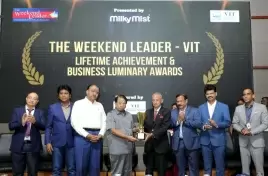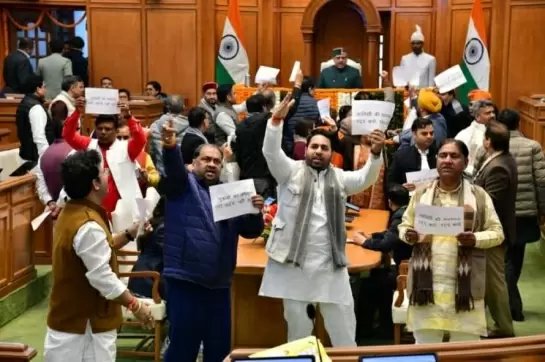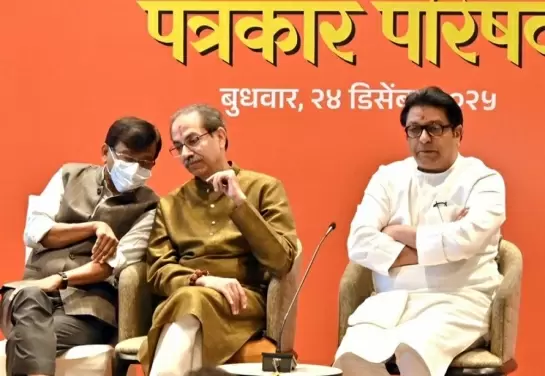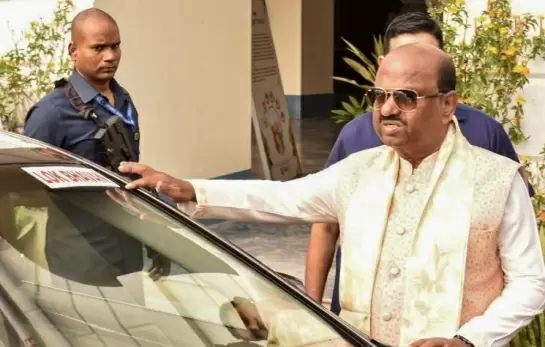Koodankulam struggle: Western nations are learning from their mistakes, India is not
24-November-2011
Vol 2 | Issue 47
Since August 2011, Tamil Nadu has witnessed renewed protests against the commissioning of the first of two 1,000 MW power plants as part of the Koodankulam Nuclear Power Project (KKNPP).
While protests have been ongoing against the project since the proposal was mooted in 1988, the impending commissioning of the reactors in light of the devastating and uncontrollable nuclear meltdown in Fukushima, Japan, has rightly triggered a wave of concern among thinking people in India.
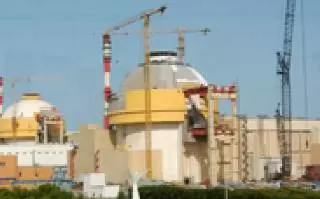 |
|
The Koodankulam Nuclear Plant has been hit by a tsunami of protests
|
The protest against nuclear power plants is not isolated to Koodankulam. Even as we speak, fisherfolk and farmers in Jaitapur, Maharashtra, and farmers and residents of Gorakhpur, Haryana, are saying a loud “No” to nuclear power plants in their area.
Haripur, West Bengal, which was to be a site for Russian reactors, will no longer be on the nuclear map, as the state government bowed to local sentiment and declared West Bengal a nuclear-free state.
Wise people do learn from others’ mistakes. Germany, Switzerland, Italy, Belgium and Japan have all announced that they will move away from the nuclear option, and explore clean and sustainable forms of electricity generation.
But India’s chest-thumping “nucleocracy” wants to play the death game, with peasants and fisherfolk as pawns in the gamble.
The staunch and united protests by farmers, traders and fisherfolk in Tirunelveli, Kanyakumari and Thoothukudi have scared the nuclear establishment.
Faced with the real prospect of having to abandon the project, the Congress-led UPA government is doing what it does best -- divide and rule; communalise the issue and allege that foreign hands are at play.
At different times, the nuclear establishment and Dr Manmohan Singh have said different things -- that Tamil Nadu’s industrialisation will falter without the project; that India cannot do without nuclear energy; that our nuclear plants are 100% safe; that abandoning the project at this stage could prove dangerous.
When it comes to explaining the consequences of a major disaster, Indian scientists, including Dr Kalam, have behaved more like astrologers than rationalists. How can anyone predict that no major earthquake will hit this area or that this human-made technology cannot fail?
The fears of Fukushima and the fears about continued electricity shortages have raised a number of conflicting emotions and doubts in people’s minds. This article aims to dispel some of the misconceptions about the safety of nuclear energy, and answer some frequently arising questions.
1. India is a developing country. We need electricity to develop. If we rule out the nuclear option, won’t our development be hampered?
Nuclear power is not the only option for generating electricity. There are a number of conventional and non-conventional sources of energy that can be explored for generating electricity.
It is a fact that in more than 60 years of post-independence industrialisation and modernisation, the contribution of nuclear energy to the total electricity generation is less than 3%.
Renewable energy sources already contribute more than 10% of India’s electricity and large hydro projects deliver about 22%. Large dams, though, have exacted a devastating toll on the environment and lives of adivasi communities.
For India to emerge as a true leader, we have to be careful not to destroy our natural capital -- our waters, lands, air and people. By saying “No” to dangerous, risky and expensive technologies like nuclear, we create opportunities to develop cleaner, saner and less dangerous forms of electricity generation.
Increasing the available electricity can also be achieved by conservation and demand-side management strategies. For every 100 MW of electricity generated in India, more than 40 MW is lost because of inefficient transmission and distribution (T&D).
Industrialised countries like Sweden have a T&D loss of less than 7%. In other words, of the total 180,000 megawatts of electricity generated in India, 72,000 megawatts (40%) is lost, wasted. That is equivalent to shutting off all power plants in the states of Maharashtra, Gujarat, Tamil Nadu, Andhra Pradesh and Karnataka.
If efficiency were to be increased to, say 90%, the savings would be the equivalent of setting up a 60,000 MW power plant -- or about 60 plants the size of the Koodankulam plant that is currently at the heart of a controversy -- with a fraction of the investment, and none of the risks.
Increasing energy efficiency of electrical appliances is another way to save electricity. In Tamil Nadu alone, if incandescent lamps are converted to LED bulbs we could save about 2,000 MW.
Add to all this, the benefits of cutting on wasteful consumption. Shopping malls and IT companies burn electricity throughout the day. Night or day, lights and ACs are running even as households and small commercial establishments have to suffer power outages.
There must be a rationalisation of the use of electricity. The fact that villages surrounding Kalpakkam, where a nuclear plant is situated, are reeling under major power shortages is proof of the “inequitable distribution” of electricity.
2. Is renewable energy technologically viable? Will it be able to meet our energy needs?
Meeting India’s energy needs requires more than just renewable source, especially since electricity is merely one form of energy. In India, electricity meets only 12% of total energy needs.
People make do without electric lighting or cooling. But even the most indigent family needs fuel for cooking. Biomass (firewood or cowdung patties) is by far the most important source of energy for the nation.
Why is it that villages that are reeling under the effects of pollution from thermal plants in Singrauli, UP -- once hailed as the energy capital of India -- have neither electricity nor clean water? While challenging coal and nuclear, we also need to question a development model that incessantly calls for sacrifices by adivasis, dalits, farmers and fisherfolk so that others may prosper.
On the topic of renewable forms of energy for electricity generation, though, the fact remains that we have barely scratched the surface in terms of harnessing the potential.
According to the Government of India, India’s potential in renewables is as follows: wind energy -- 48,500 MW (65,000 MW, according to the Indian Wind Energy Association; http://www.inwea.org/); small hydro power -- 15,000 MW; biomass energy -- 21,000 MW; and at least 400,000 MW from solar energy.
The monumental amounts of money being sunk into nuclear technology can be gainfully diverted to increase research in renewables, and electrical energy efficiency.
Already, advances in solar and wind technologies are reducing per MW costs. The capacity of existing windmills can be increased six to eight-fold by replacing older, lower-capacity turbines with newer, higher-capacity turbines, or by installing new and more efficient turbines amidst existing windmills.
In the last 15 years, India has added about 17,000 MW of power using renewable sources; China has added the same amount in just one year. So, where is the need to put all our eggs in the “nuclear basket”?
Secondly, many of the applications of electricity can be met by smart design. Tinted glass buildings in a city like Chennai require the burning of electricity for lighting throughout the day, even when the sun is shining brightly outside. Our city’s malls and IT companies in the Knowledge Corridor are examples of such “stupid” design.
In Germany’s Black Forest region, an ordinary woman named Ursula Sladek mobilised people to pay for the takeover of the electricity company after the Chernobyl disaster.
Today, the people-owned company supplies electricity generated from small, decentralised renewable sources to more than 100,000 customers. After the Fukushima disaster, an average of 400 new customers are subscribing to the company, requesting clean electricity. It is clear that electricity from renewable energy is not just environmentally sustainable but also commercially viable.
3. Can we, as Dr Abdul Kalam says, let one disaster (in Fukushima) derail our dreams of becoming an economically developed nation?
Besides the better-known disasters at Kyshtym, in the erstwhile USSR (1957), Three Mile Island (1979), and Chernobyl (1986), at least 76 nuclear accidents totalling $19.1 billion in damages have occurred between 1947 and 2008.
Most of these accidents -- 56 to be precise -- happened after the Chernobyl disaster. This translates to one serious nuclear incident every year, causing $332 million in damages annually.
Between 2005 and 2055, at least four serious nuclear accidents are likely to occur, according to calculations by an interdisciplinary study titled ‘The Future of Nuclear Power’ conducted by the Massachusetts Institute of Technology in 2003. The 2011 Fukushima disaster is the first of MIT’s prophetic estimates.
And it is not just disasters that we are concerned about. Even nuclear reactors that “operate perfectly” are associated with higher risks of cancer and unexplained deaths.
In the US, where 104 reactors are operating at 65 sites, elevated rates of leukaemia and brain cancers are reported from communities near nuclear power plants.
Studies conducted by Dr V. Pugazhenthi, a physician and researcher, who provides medical services in the nuclear town of Kalpakkam, Tamil Nadu, have revealed elevated incidences of congenital deformities like polydactyly (webbed fingers), thyroid problems and various kinds of cancers among people living around the nuclear facility.
4. Dr Abdul Kalam says coal-fired power plants are dirty because they cause pollution and emit tonnes and tonnes of climate-changing carbon. He points to the devastating impacts of coal mining on the environment and the lives of communities in the vicinity.
Dr Kalam is right about coal-fired power plants. Coal plants are dirty and polluting. Coal mines are hells on earth. But we should not be forced to choose between two evils -- nuclear or coal. Would you like to be raped or killed? My answer is “Neither”.
Dr Kalam does not talk of the effects of uranium mining on the environment and health of communities. In Jadugoda, Jharkhand, where India’s uranium is mined by the Uranium Corporation of India Ltd, the effects of radiation among the local adivasi population are horrendous.
Indian Doctors for Peace and Development, a national chapter of the Nobel-winning International Physicians for Prevention of Nuclear War, recently published a health study on Jadugoda. The study found that:
• Primary sterility is more common in people residing near uranium mining operations.
• More children with congenital deformities are being born to mothers living near uranium mining operations.
• Congenital defects as a cause of death of children are higher among mothers living near uranium mines.
• Cancer as a cause of death is more common in villages surrounding uranium operations.
• Life expectancy of people living near uranium mining operations is lower than Jharkhand’s state average and lower than in villages far removed from the mines.
• All these indicators of poor health and increased vulnerability are despite the fact that the affected villages have a better economic and literacy status than reference villages.
The path to a sustainable and socially just future lies in moving away from environmentally destructive technologies such as coal and nuclear. Nuclear energy will not help us combat climate change. Per unit of power, nuclear energy emits four to five times more carbon dioxide (CO2) than renewable energy. If the entire nuclear fuel cycle is considered, the emissions are even higher.
5. Why are people protesting only now? Couldn’t they have told the government that they don’t want the project when it was first proposed?
The project was first proposed in 1988. Within months, protests built up against the nuclear plant. People and students mobilised 1 million signatures against the nuclear plant to hand over to Mikhail Gorbachev, the then Premier of the USSR, when he visited India in 1989.
Black flag protests, youth mobilisation, rallies in Chennai and other urban centres: Koodankulam has been a controversial issue from Day One.
On May 1, 1989, fisherfolk and other residents from around the project site organised a massive rally in Kanyakumari town. The peaceful rally was disrupted by the police, and one youngster -- Ignatius -- was shot in the police firing that ensued.
Between 1991 and 2001, the protests died down, because the USSR -- the technology provider -- splintered into several smaller nations. But this history is glossed over by the propagandists, and repeated without verification by a lazy and irresponsible media.
Like the Rajiv Gandhi government at that time, the Sonia Gandhi government now has refused to acknowledge the protests or heed the aspirations of local people.
That is evident from the manner in which the central government is hell-bent on pushing the Jaitapur nuclear project in the face of stiff opposition by local farmers and fisherfolk. Protests in Gorakhpur, Haryana and Jaitapur are not just being ignored but violently repressed.
It is true that the imminent commissioning of the Koodankulam plant, and the threat of expansion of the complex to accommodate 6,000 MW of capacity, has re-awakened the fears of the local people.
The 2004 tsunami gave the coastal people firsthand experience of the raw fury of nature. Television images of the devastation caused by the triple disaster in Fukushima, and the subsequent tragedy of lakhs of Japanese who were prevented from returning to their homes or to their normal lives, are still fresh in the minds of people. People would be stupid not to be fearful.
6. Crores of rupees have already been spent on constructing the plant. Isn’t it too late to abandon the project now?
It is never too late to do the right thing. It is better to write off a bad investment than to continue investing in spite of knowing the certainty of routine nuclear pollution and the risks of a disaster.
Consider the costs of a disaster. Belarus, a state in the erstwhile USSR, suffered the maximum damage as a result of the 1986 Chernobyl nuclear disaster.
According to a report by the International Atomic Energy Agency, between 1991 and 2003, Belarus spent $13 billion on disaster-related expenses. It has estimated its losses over 30 years at $235 billion.
Ukraine, the country where Chernobyl was located, still allocates 6-7% of total government spending on disaster rehabilitation programmes. Radiation fallout from the disaster has contaminated more than 200,000 sq km, mostly in Russia, Belarus and the Ukraine. That is about twice the size of Tamil Nadu.
In Fukushima, just closing down and safely dismantling the Dai-Ichi nuclear plant will take 30 years and cost between $12 billion and $19 billion. This does not include the costs of health monitoring, evacuation and social security, remediation of contaminated environments, economic losses arising from loss of agriculture and fisheries income, or foreign trade lost due to fear of radiation contamination.
If a decision to opt out of nuclear power is taken, there is still time to convert the Koodankulam plant to a less risky and less polluting technology such as a gas thermal plant.
The Shoreham nuclear plant in Long Island, New York, was converted to work on natural gas after the Three Mile Island accident took place. The William H Zimmer nuclear plant in Ohio and the Midland Cogeneration Facility in Michigan were similarly converted to run on fossil fuel.
7. Indian nuclear plants are safe. So many of India’s nuclear plants have run for decades without mishap. So what’s the problem?
The claim that Indian nuclear plants are safe is contrary to the facts. Safety breaches in India’s nuclear establishments seldom come to light because of the shroud of secrecy surrounding the institutions. But what little we know gives serious cause for concern.
Just take the case of Kalpakkam. The following violations have come to light, including some that were acknowledged more than six months after the incident.
• 1987: A refuelling accident ruptured the reactor core
• 1991: Workers were exposed to radioactive heavy water
• 1999: 42 workers were exposed to radiation
• 2002: 100 kg of radioactive sodium was released into the environment
• 2003: 6 workers were exposed to high levels of radiation
Other very serious incidents have happened in other reactors. In November 2009, more than 55 workers at the Kaiga nuclear plant, Karnataka, were exposed to excessive levels of radiation when they drank water laced with radioactive tritium.
Addition of safety systems has often been an afterthought. A November 1986 report titled ‘Safety of the Indian Pressurised Heavy Water Reactors’, by the Department of Atomic Energy’s Reactor Safety Analysis Group, states that: “In India, tsunamis and seiches do not occur. Hence cyclones alone have been singled out for detailed study.”
This analysis was for pressurised heavy water reactors (PHWR) of the kind that is installed in Kalpakkam. The 2004 tsunami flooded the entire township and reactor complex. The Kalpakkam reactor survived the 2004 tsunami not by design but by chance.
Even today, the Kalpakkam reactor is not designed to survive a major earthquake or tsunami despite the fact that an International Atomic Energy Agency publication of 2011 identifies one active submarine volcano near the coast of India, that is, off the coast of Pondicherry, 60 km from Kalpakkam.
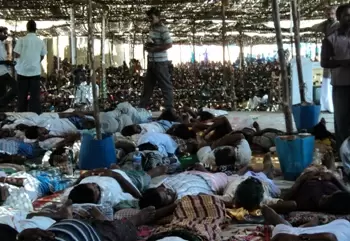 |
|
The locals are staying united despite attempts to break the struggle using the communal card
|
8. All safety systems are in place in Koodankulam. Dr Kalam says the plant is 100% safe and that there is no threat of a tsunami since the plant is located 1,300 km from the seismic centre point. He has urged people to have faith in the government, and to believe governmental experts and engineers. Shouldn’t people do that instead of questioning the experts?
First, any good scientist or engineer will tell you that there is no such thing as 100% safe. Such a declaration is 100% false. Rather than educating people on the true nature of the risks, and the magnitude of effects in the event of a disaster, Dr Kalam seems intent on lulling them into complacence.
Complacence is the worst thing that can happen for disaster preparedness. It is outright irresponsible to lie to people about the true nature of dangerous technologies.
Second, despite the 2004 tsunami, which belied the Department of Atomic Energy’s declaration that “In India, tsunamis… do not occur,” we have Dr Kalam repeating this false statement. Dr Kalam’s statement that a tsunami will not occur belongs in the realm of astrology and not science.
Dr Kalam would have us believe that safety and emergency responses are merely matters of technology. That is not true.
Robust safety and emergency response systems have to do with siting, planning, the setting up and maintenance of escape routes, an informed citizenry that is trained to react appropriately, an open and transparent administration that is capable of acknowledging and correcting mistakes, engineers and technologists that respect nature’s power, and builders and contractors that are honest.
In May 1994, the inner containment dome of a nuclear reactor under construction in Kaiga, Karnataka, collapsed sending 120 tonnes of concrete crashing down.
The dome is meant to contain radiation in the event of an accident. A Gopalakrishnan, the Atomic Energy Regulatory Board’s former head, writes that “senior NPC civil engineers and the private firms which provide civil engineering designs… to the DAE have had a close relationship. In this atmosphere of comradeship, the NPC engineers did not carry out the necessary quality checks on the designs they received”.
If the dome had collapsed when the plant was in operation, we would have had a Level 7 meltdown on our hands.
In July 2011, even as the disastrous events in Fukushima were unfolding, the Leningrad-2 nuclear reactor under construction in Russia experienced a serious mishap.
Shortly after concrete was poured for the construction of the outer protective shell of a reactor unit, the structure began to deform with the reinforcement bars bending and dangling about 26 feet above the ground.
The reactor under construction is of the VVER 1200 type, a generation ahead of the VVER 1000 reactors currently installed in Koodankulam. Experts have speculated that corruption and use of substandard material may have been behind the mishap.
In Koodankulam, we are witnessing the setting up of a high-risk technology by two nations -- India and Russia -- which compete with each other in the realm of corruption.
9. Aren’t you being anti-science and emotional in protesting against nuclear power?
The argument against Koodankulam is not an argument against science and experimentation. 10,000 MW as in Jaitapur and Koodankulam are not experiments.
These are not 100 kilowatt reactions in a lab condition. They are massive investments in power generation technology putting more than just the lives of experimenters at risk. Unwilling people cannot be asked to sacrifice their lives in the interest of Kalam’s science.
It is true that many experimenters have sacrificed their lives at the altar of science, and we need to acknowledge them with gratitude.
The Nazis experimenting with poisonous chemicals on unsuspecting and unwilling captive Jews, or the pharmaceutical companies currently testing their dangerous medicines on indigent and choiceless people may be contributing to the advancement of science. But their methods are plain criminal.
The people supporting the Koodankulam struggle are not “Can’t Doers”; they are “Won’t Doers”. Dr Kalam is not talking about risking his life for the advancement of science; he is blaming the Koodankulam people for refusing to risk their lives.
Good engineers and scientists require humility, integrity and an ability to accept mistakes and move ahead with the learnings. India’s nucleocracy lacks all these.
It is not the villagers that need convincing. Insurance companies are not convinced that nuclear plants are risk-free. On the contrary, they believe that the risks of a nuclear blow-out are uninsurable.
If the Koodankulam plant is completely safe, as Dr Kalam puts it, it would be useful to see Dr Kalam convincing the insurance companies to provide blanket cover to nuclear power plants, and convincing the nuclear equipment suppliers to abandon their insistence on a nuclear liability protocol that exempts them from compensating in the event of a disaster, even if it is caused by a wilful fault on their part.
Building a nuclear plant merely on the basis of a belief -- as if in God -- that a tsunami or major earthquake will not occur is what is anti-science.
10. Every technology has its risks. Cars, ships and trains routinely have accidents. You don’t see us abandoning cars and ships. Then why should we abandon nuclear power?
Car accidents or even plane accidents do not leave behind a 20 km exclusion zone in which human life cannot return to normal for decades. A person driving in a car or travelling by plane accepts certain risks voluntarily.
A car or a plane accident does not affect the next generation and the unborn. The unborn cannot even be consulted on whether the risk that we are taking is acceptable to them.
Imposing such a risk on generations to come is patently unjust. Car accidents do not necessitate the evacuation of people living within a 75 km radius.
Until a technology’s risks are proven to be manageable -- and we have seen the unmanageability of the nuclear technology on occasion after occasion -- wisdom advises that it be kept in the realm of experimentation. It certainly cannot be unleashed on an unsuspecting community.
11. Dr Kalam has offered a Rs 200 crore development package including clean water, jobs, schools, hospitals and motorboats and cold storage facilities to people in the villages surrounding Koodankulam. Will that not make this development more inclusive?
This offer of Rs 200 crore is perverse. “If you can’t convince them, bribe them,” seems to be the line taken by Dr Kalam. How different is this from the spate of freebies offered by politicians before elections?
Does this mean that if people don’t consent to the nuclear power plant, they will be denied hospitals, schools and clean water? What about other communities where no nuclear power plant is proposed to be built?
Will they have to wait for one to be constructed in their backyard so that their rights to water and education can piggyback on that project?
The people are looking for answers to serious questions. Dr Kalam should answer them respectfully, or restrain himself from speaking. - Infochange News and Features





